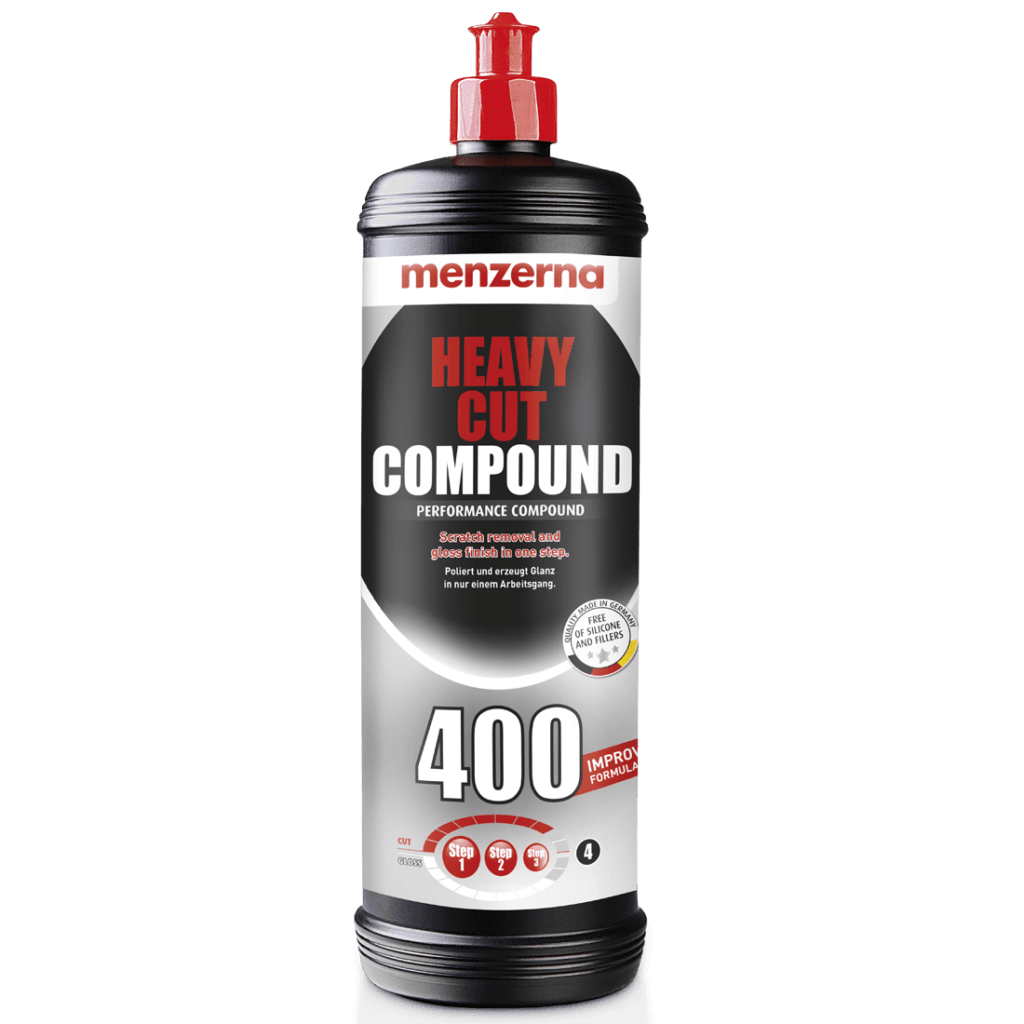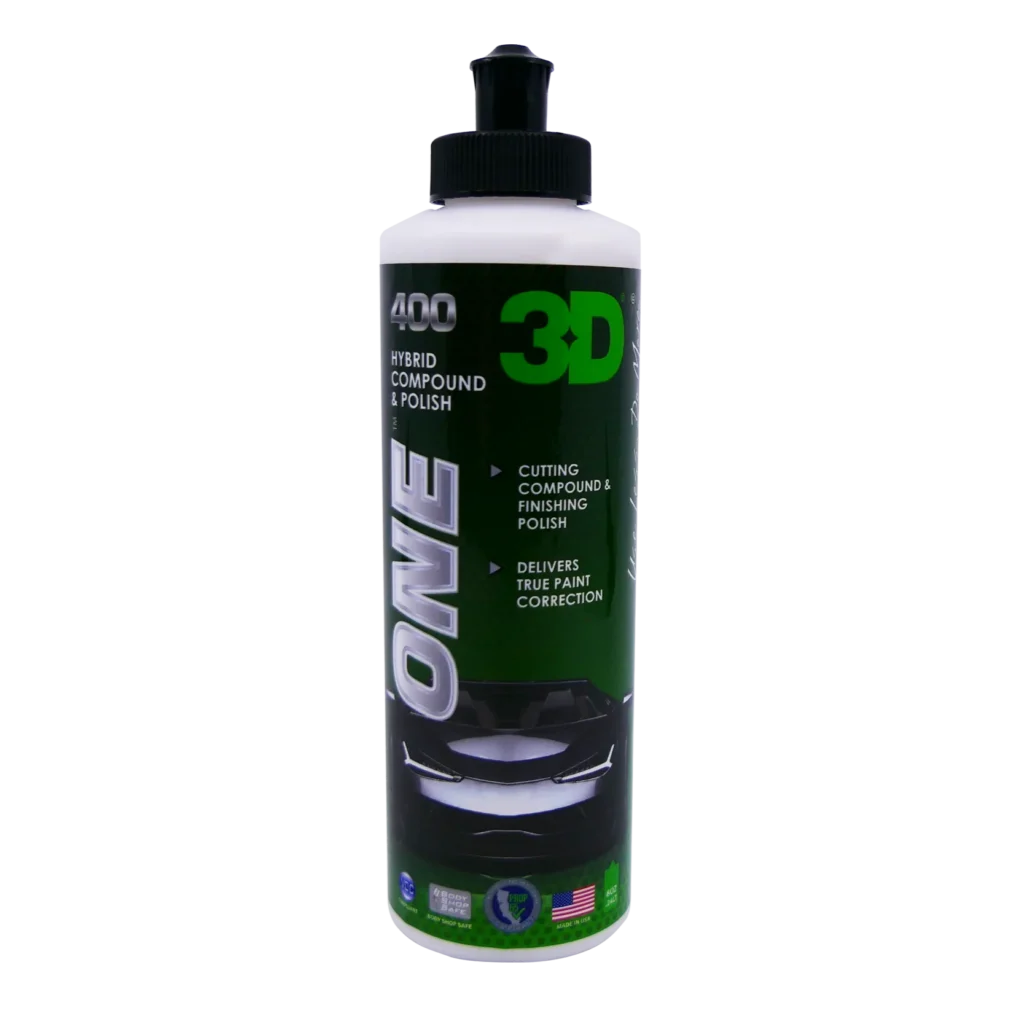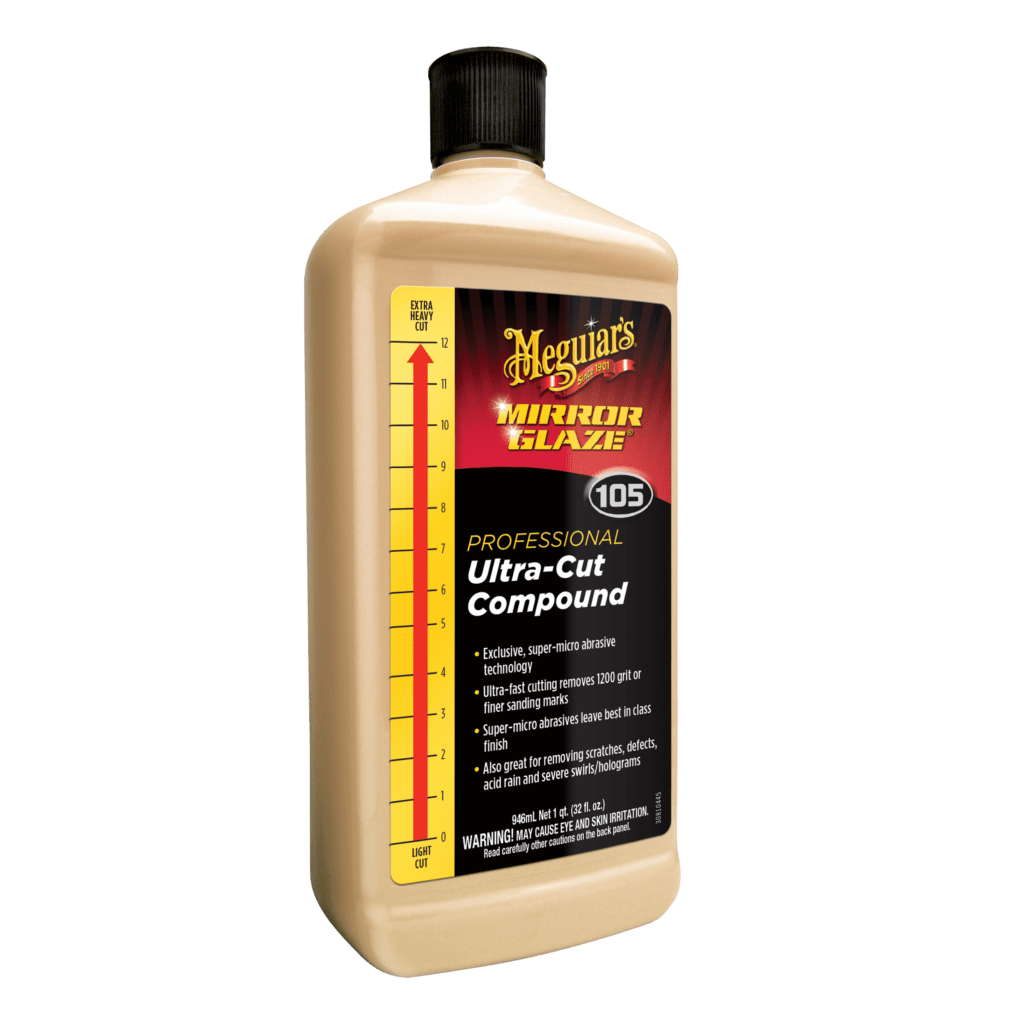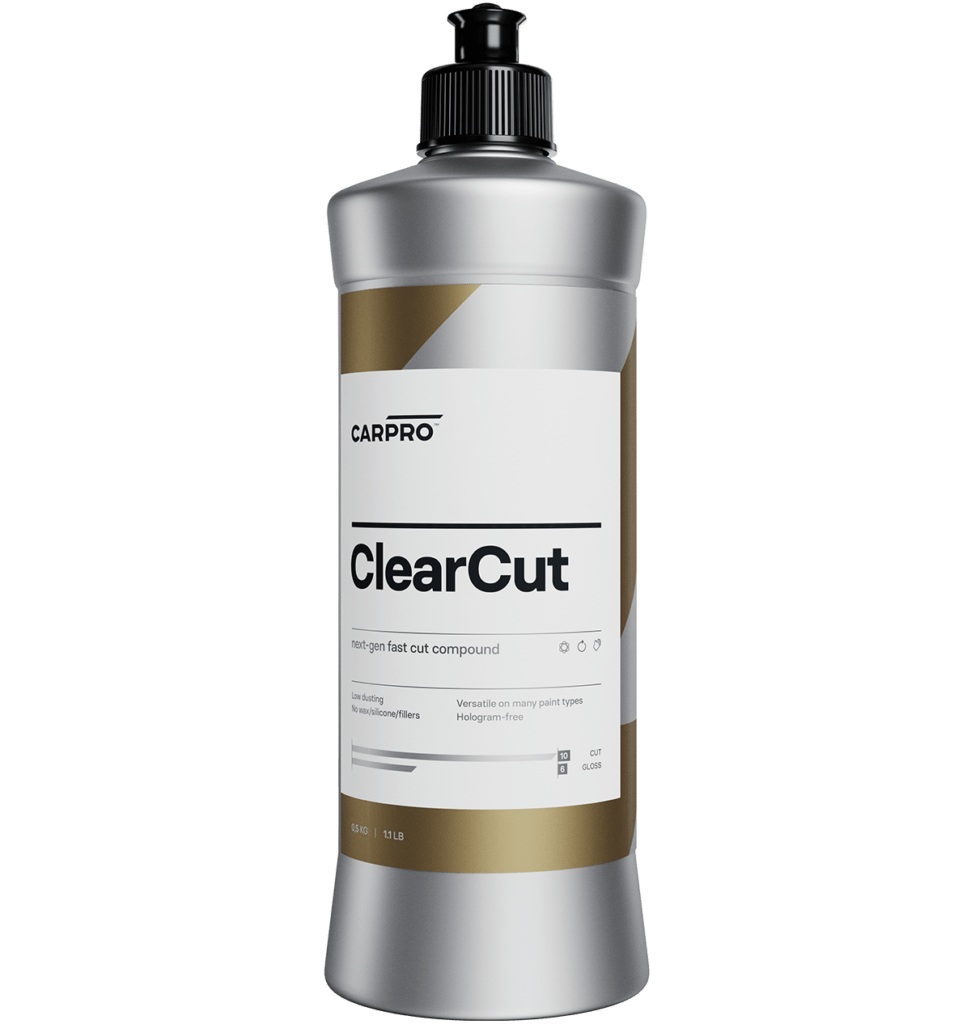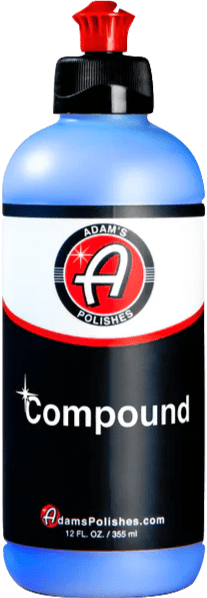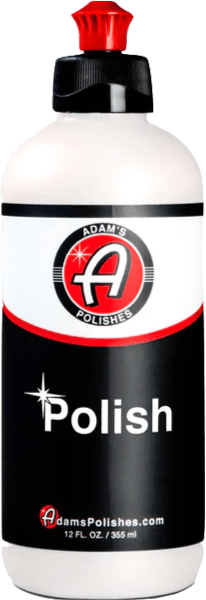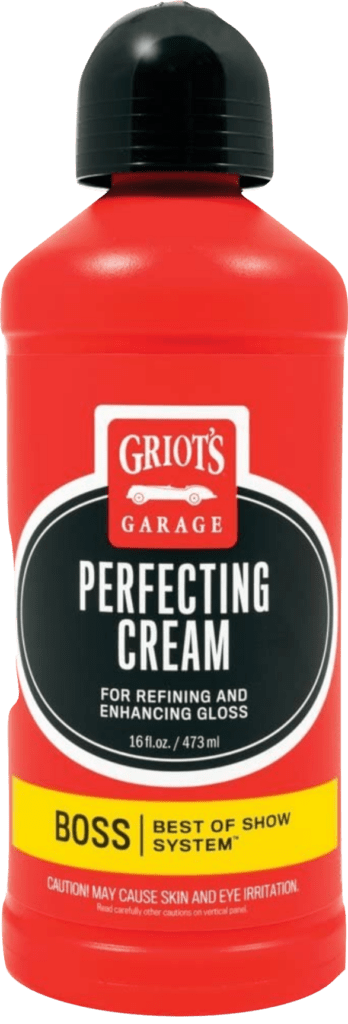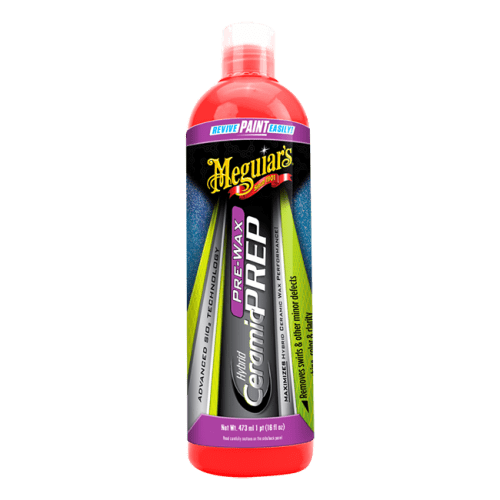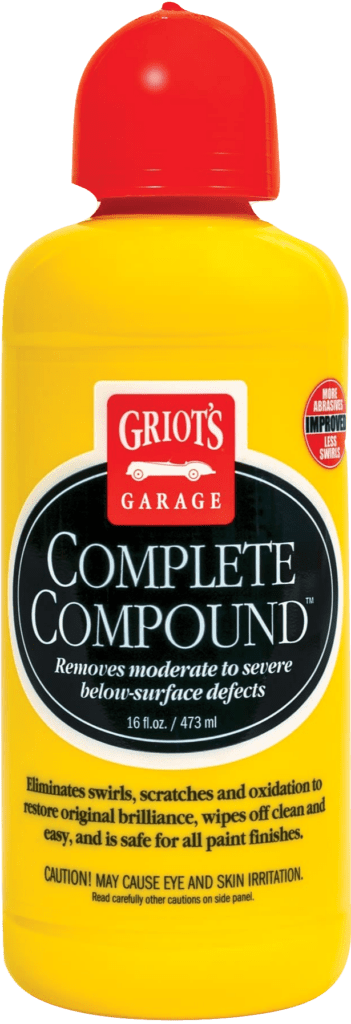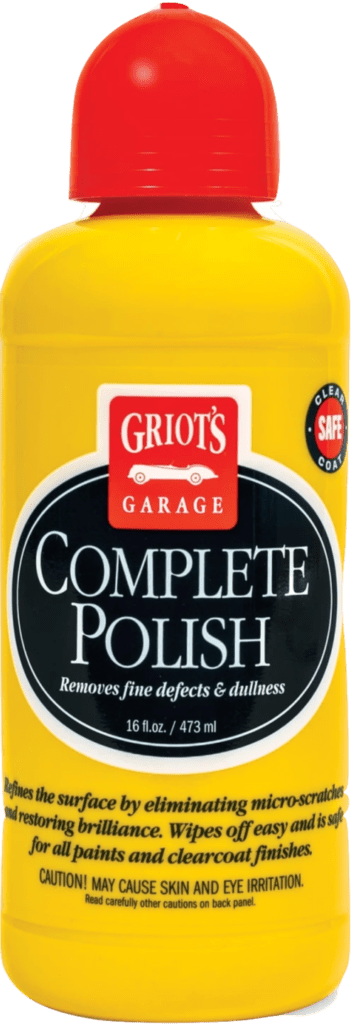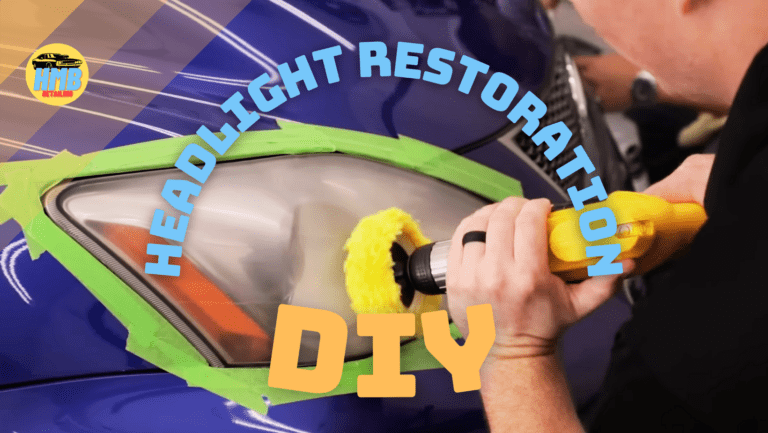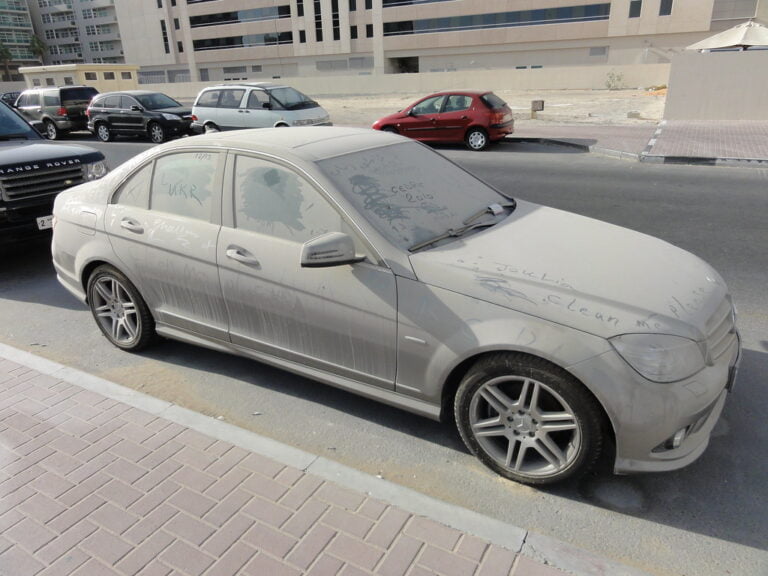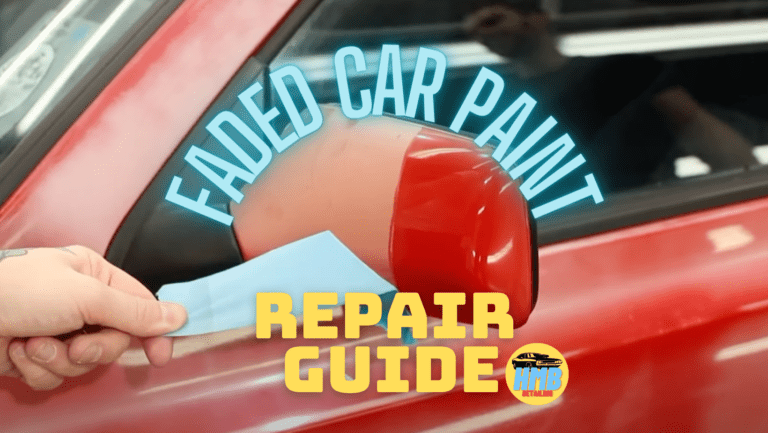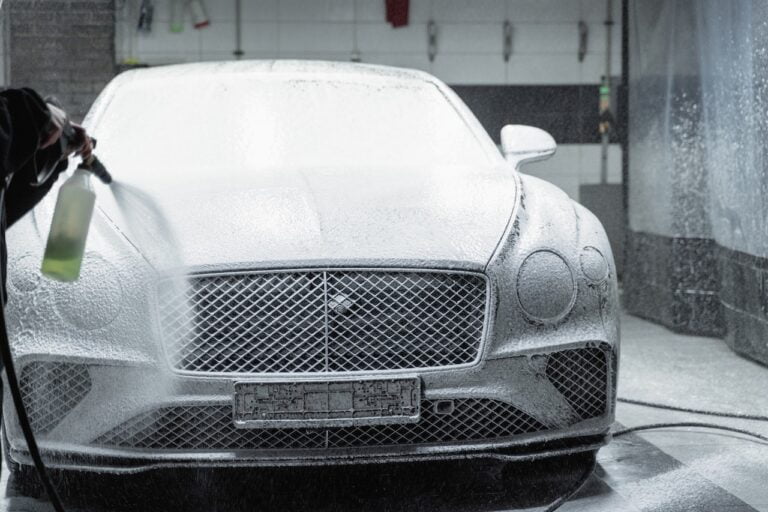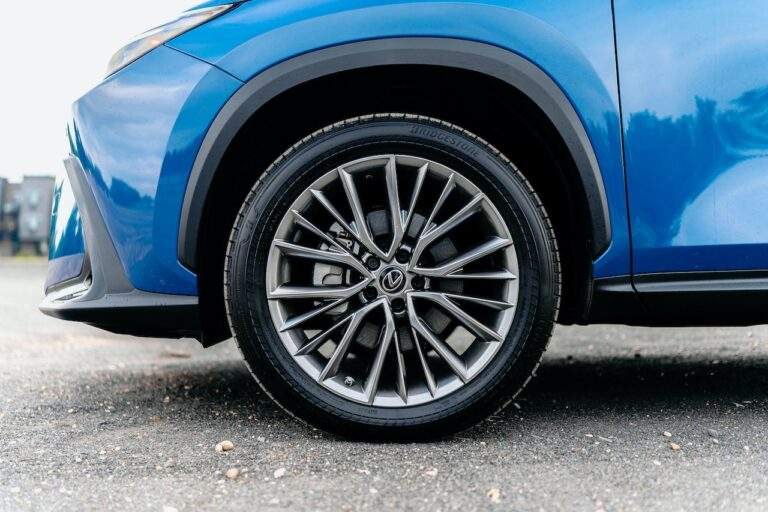From Dull to Dazzling: Polishing a Car with a Buffer and by Hand
Polishing a car is a process of restoring and improving the appearance of the vehicle’s paintwork by removing swirl marks, scratches, faded spots, and other surface defects. If you are a car enthusiast, you know that car polishing can make an enormous difference in its appearance. But if you are new to car detailing, the process can seem frightening and complicated.
The average cost of professional car polishing can range from 100$ to 500$ and more. High-quality polishing requires proper knowledge and accuracy to avoid damaging car paint and achieve desired results. In this post, we will guide you through the steps to polish your car like a Pro!
We will cover everything from preparation, tools, car care products, and technique so you can make by yourself a high-quality car polishing with a buffer or by hand.
If you buy something through links in this article, we may earn a commission but it does not impact our advice or the price of your purchase. Learn more.
Table of contents
The Benefits of Polishing a Car
Polishing a car is not just about appearance enhancement, as many of you think. It also has several benefits in overall vehicle surface protection and maintenance.
- Car polishing helps you remove swirl marks, oxidation, and minor scratches and restore car paint shine together with the deepness of color. Such imperfections in car paint let water, contaminants, and harsh chemicals destroy the paint’s structure easier. So by polishing your car, you remove the risks of letting these imperfections develop.
- After polishing a car, its surface become smooth, which makes it more resistant to water, dirt, grime, and contaminants. It means that the paint is not getting dirty so much and so fast as with swirl marks and scratches. As well, a smooth surface is much easier to wash and clean.
- Once you will get enough experience in polishing cars, it can become a great starting point for your car detailing business.
Unfortunately, polishing a car means cutting a thin layer in several microns of your vehicle’s paint. It means we cannot make it unlimited times, but you can always restore this layer by adding a protective layer on top of that, like ceramic coating. We will discuss protecting the car’s paint after polishing further in this article.
Preparing Your Car for Polishing
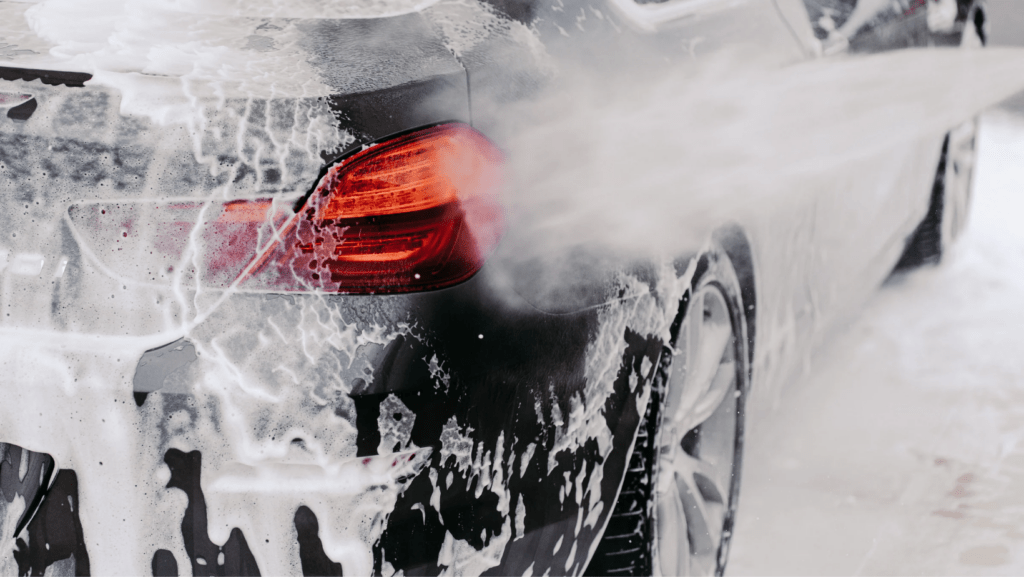
Before diving into the process of polishing, we need to make proper preparation to ensure perfect results. Spending enough time on the prep of the car’s surface will help you to achieve a smoother and more effective polishing process. Make a note that you should remove deep scratches or imperfections before polishing to have a high-quality finish. Check our car scratch repair guide to remove deep scratches. If you don’t have deep scratches, here are steps to prepare your car for polishing:
- Washing and Decontamination: Wash your car thoroughly, using high-quality car wash shampoo, wash mitt, and plenty of clean water. Use the two-bucket wash method to remove all dirt and debris from the paint surface.
- Drying: Once your car is clean, it’s time for drying. Use a high-quality drying towel to dry your car’s paint thoroughly. Make sure your paint is completely dry before proceeding.
- Masking: Use masking tape or automotive masking film to protect areas that should not be polished. It can be plastic trim, rubber seals, or decals. If you can remove some of them easily and without breaking, do it.
- Paint Inspection: Inspect your car’s paint for any visible defects like swirl marks, minor scratches, or oxidation to identify the areas you need to pay more attention to during polishing.
Polishing a Car Checklist: Must-Have Tools and Supplies
Another step of preparation for polishing is having all the necessary tools and supplies ready before you start the process. Here is a check-list for you of things you should have for polishing:
| Tools or Supplies | Description |
|---|---|
| Polisher | It can be a rotary or dual-action (DA) polisher. |
| Polishing Pads | Choose suitable pads for your car’s clear coat and the specification of the polishing job. It can be foam, microfiber, or wool pads in various cutting and finishing grades. |
| Polishing Compounds | Get a proper grade of polishing compound to match the level of correction and type of paint surface. |
| Microfiber towels | Masking tape protects sensitive areas like plastic trim, rubber seals, and badges. |
| Detailing Brushes | Soft bristle brushes for removing dirt and grime from crevices, emblems, and other hard-to-reach areas. |
| Masking Tape | Sufficient lighting, natural sunlight, or high-quality LED lights to access the paint surface properly and ensure even polishing. |
| Lubrication Spray | A water-based lubrication spray for pads and paint surfaces. It will keep it moisturized and help to prevent damage by reducing friction. |
| Finishing Touch Products | Glazes, Sealants, or waxes to further enhance the paint’s shine and protection. |
| Personal Protective Equipment (PPE) | Safety goggles, nitrile gloves, and a respirator. |
| Adequate Lightning | Sufficient lightning, natural sunlight, or high-quality LED lights to access the paint surface properly and ensure even polishing. |
Polishing a Car with a Buffer: A Step-by-Step Guide
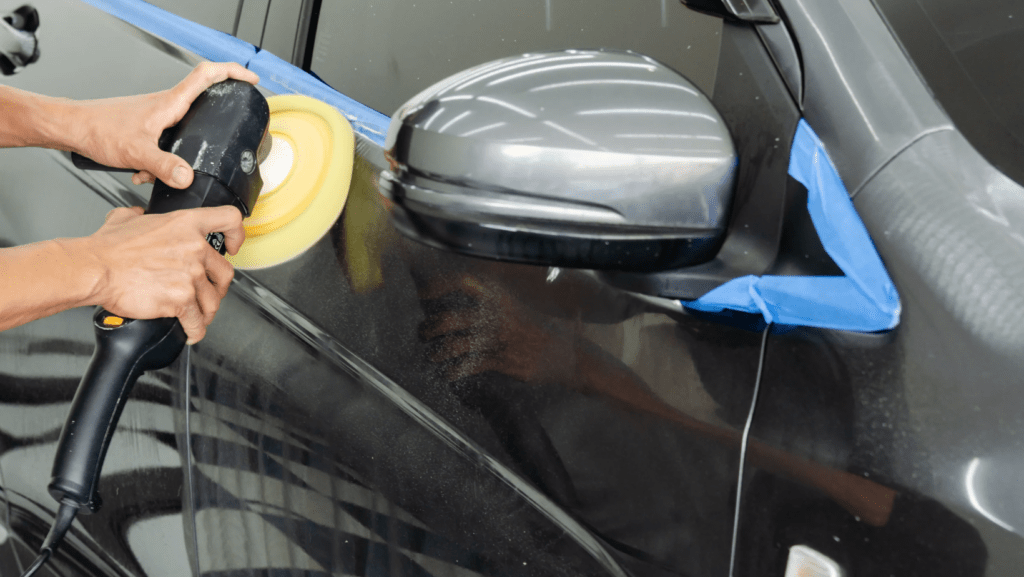
Once you finish all preparations, it’s time to start polishing. For complete paint correction, you can use a compound for the first stage and a paint polish for the second. Compound cuts the clear coat to remove deeper imperfections, and paint polish finishes the process by removing small defects. Some car care brands offer all-in-one solutions. Each of them has nuances and, at the same time, is identical in the application process. As we don’t know which product you will use, we describe our guide only with a compound. If you use a paint polisher, after step 3, apply the polisher using its manufacturer’s instructions. Here are the steps you should follow to achieve stunning results:
Step 1: Apply Polishing Compound
Apply several dots of compound on the applicator and spread it on a small area on the paint’s surface while the polisher is switched off. Spay lubrication spray on your pad. Choose the size of areas that you will be able to polish before the product gets dry. You can divide the hood and roof into four parts and then go with doors, fenders, and tailgate, which you can divide into two parts.
Step 2: Spread the Product with Polisher. Priming.
Place the rotary or DA polisher on the paint surface, switch on low-speed settings, and spread the product on the work area. Your goal here is to create an even layer of compound on the surface.
Step 3: Start Polishing a car with Slow and Even Passes
Now you can start polishing. Place the polisher in the work area, and switch higher speed setting suitable for your pad and compound. Depending on which polisher you use, it can be different settings, for example, for Rupes, the polishing speed is 3-4. Check suitable speed settings for your specific tool before polishing.
To polish properly, use the four passes technique, where you go first left to right and then up and down, overlapping each pass. Use even pressure and avoid applying excessive pressure to avoid burning your clear coat. Make sure that your pad is always flat on the surface. While making passes, don’t hurry. Move your polisher slowly, approximately one inch per second.
Step 4: Wipe off Residue and Inspect
After polishing, wipe off the compound residue with a clean microfiber towel. Inspect the paint surface to check the result and identify any remaining imperfections. If needed, repeat the polishing process with a finer compound and pad to achieve desired results. Keep in mind that you are cutting a clear coat while polishing, so don’t overdo it. Continue with steps two, three, and four until you polish an entire car.
Step 6: Apply Finishing Touches
Once you achieve desired paint clarity, you can apply protective products. As I said, you were cutting a thin layer of clear coat, which is a protective layer of paint. It means we should recover it and add some protection to it. You can apply sealants, glazes, waxes, or even ceramic coating. Follow our guide to applying waxes and a guide to ceramic coating to make everything correctly.
Hand Polishing a Car: A Step-by-Step Guide
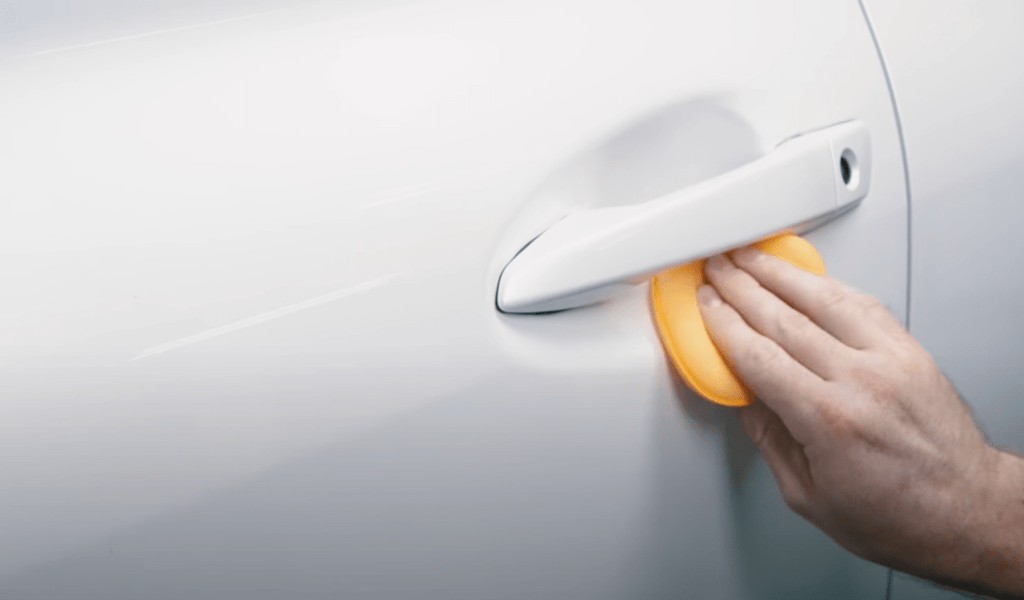
Hand polishing can take much longer time than machine polishing. On the other side, it saves you money on buying a polishing machine, which makes it more affordable for everyone. If you will make it correctly, and the severity of paint damage is not high, you can achieve impressive results with it.
This method of paint correction has similar steps to polishing with buffer, excluding several details, which we will describe more in this step-by-step guide.
Step 1: Choose the right Polishing Product
Select a high-quality polishing product for hand application. Using compounds for machine polishing and applying them by hand will not bring desired effects.
Step 2: Start Polishing with Circular Motions
Apply several dots of product on the applicator and spread it all over the work area. Using light to moderate pressure, polish the surface in a circular motion. Work on a small section at a time to avoid drying the product. Use four passes technique as with machine polishers, overlapping each pass.
Step 3: Wipe off Residue and Inspect
Once you finish polishing the area, use a clean microfiber towel to remove any excess product from the surface. Inspect the paint surface for any remaining imperfections. If you notice areas that need more attention, repeat the hand-polishing process.
Step 4: Apply Finishing Touches
Once you achieve desired paint clarity, you can apply protective products. As I said, you were cutting a thin layer of clear coat, which is a protective layer of paint. It means we should recover it and add some protection to it. You can apply sealants, glazes, waxes, or even ceramic coating. Follow our guide to applying waxes and a guide to ceramic coating to make everything correctly.
Best Polishing Products for Optimal Results
Best Professional Compounds for Polishing a Car with a Buffer
Professional compounds are typically formulated with higher-quality ingredients, but they offer a higher cutting power. So if you are just a beginner, it’s better to make your first polishing with regular compounds to get some practice and then move to a professional one. Always read the manufacturer’s instructions before using any polishing product!
1. Menzerna Heavy Cut Compound 400
It is a professional compound well-known for its cutting power and ability to tackle severe paint imperfections. It effectively removes scratches, heavy oxidation, and other effects. The product leaves a smooth and flawless finish. Silicon-free and easy to wipe off.
2. RUPES Fine Compound for Polish & Swirl Remover
It is a high-quality water-based abrasive compound formulated with unique abrasive particles. It offers high cutting power with minimal dusting, and the car effectively removes scratches, swirl marks, and other imperfections. The product leaves a glossy finish.
3. 3D One Hybrid Compound & Polish
This polishing product combines the benefits of compound and polish in one product. It can remove moderate and severe defects and provide high-gloss and clear coat clarity, which saves time during the polishing process.
4. Meguiar’s M105 Ultra-Cut Compound
M105 is a heavy-duty compound that removes deep scratches, swirl marks, and other paint imperfections. It has a fast-cutting action and leaves a smooth and glossy finish, which makes it effective in correcting severe paint defects.
5. CarPro ClearCut Compound
ClearCut is a fast-acting abrasive compound that can quickly remove paint defects. The product has no fillers in it and is easy to wipe off. Effectively removes swirl marks, scratches, and other paint defects.
Best Polishing Duets for Machine polishing
1. Chemical Guys C4 Correcting Compound + P4 Perfection Polish

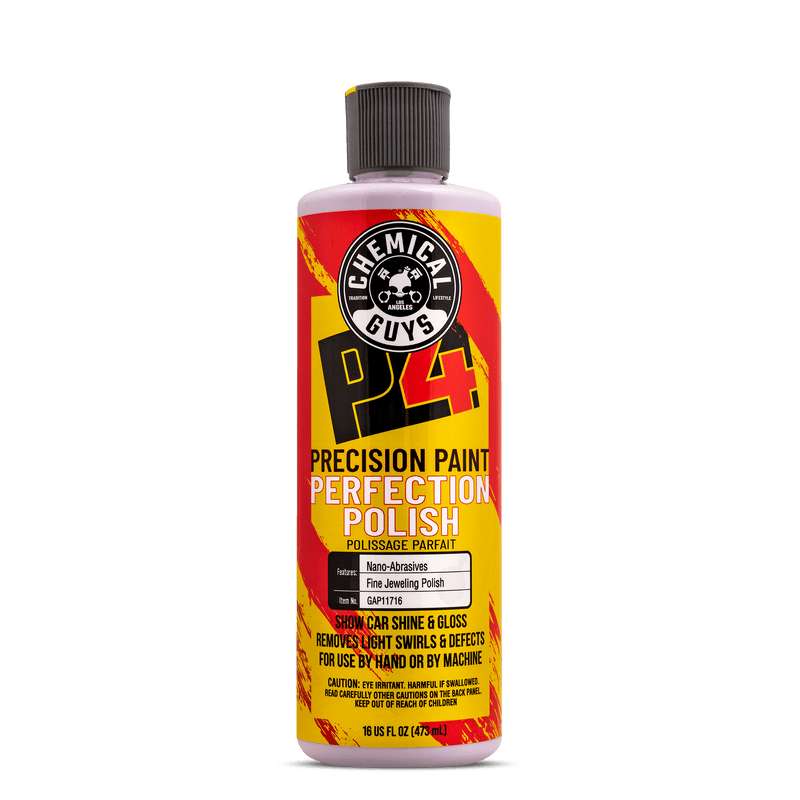
This product combination from Chemical Guys allows you to achieve professional results in paint correction, even if you are just a beginner. The C4 Correcting Compound has advanced abrasives that can remove moderate defects. After C4, you should follow with P4 Perfection Polish. P4 has in its formula fine abrasives to refine the paint surface and enhance its gloss. It is a great tandem to restore car paint.
2. Meguiar’s Ultimate Compound + Ultimate Polish
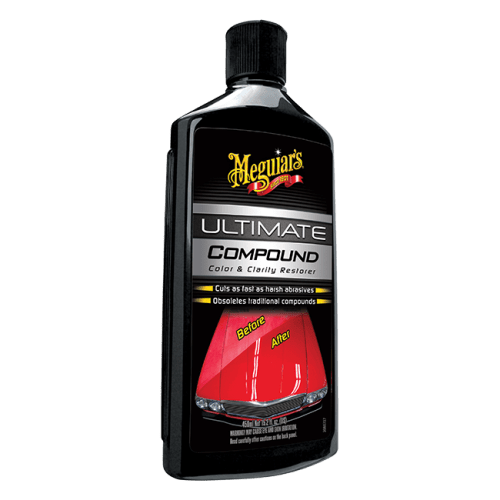

A combination from Meguiar’s is for those who want a complete system for paint correction. The Ultimate Compound has in its formula micro-abrasive technology that can remove light to moderate paint defects. The next step is Ultimate Polish which further refines the paint and enhances its clarity and gloss. These products work together to restore your paint with a machine polisher but also can show impressive results with hand polishing.
3. Adam’s Compound + Polish
A polishing combination from Adam’s Polishes provides you with a comprehensive solution for paint correction. Adam’s Compound has in its formula aggressive abrasives to remove moderate to heavy paint defects. Following Adam’s Polish which has fine abrasives, you can refine the paint and enhance the gloss. This combination is an effective solution for a wide range of paint types and paint defects.
4. Griot’s Garage Boss Correcting Cream and Boss Perfecting Cream
Griot’s Garage polishing combination is designed for use with their Boss G21 and G15 dual action polisher, but you also can use it for hand polishing. The Boss Correcting Cream has in its formula advanced abrasives to remove moderate paint defects. The next step is Boss Perfecting Cream which uses fine abrasives and can refine the paint and enhance its gloss. It is a solution that can bring professional results even for beginners in polishing.
Best products for Hand Polishing a car
1. Meguiar’s Ultimate Compound + Ultimate Polish


A combination from Meguiar’s is for those who want a complete system for paint correction. The Ultimate Compound has in its formula micro-abrasive technology that can remove light to moderate paint defects. The next step is Ultimate Polish which further refines the paint and enhances its clarity and gloss. These products work together to restore your paint with a machine polisher but also can show impressive results with hand polishing.
2. Adam’s Polishes Hand Polish
Adam’s Polishes create a specialized product for hand application. It can remove minor swirls, sand scratches, oxidation, and other defects without generating any haze. It has lubricant and protection agents in its formula, which makes it easy to apply.
3. Meguiar’s Hybrid Ceramic Pre-Wax Prep
Hybrid Ceramic Pre-Wax is not a traditional polish or compound, but it has fine polishing agents that can remove minor swirl marks and scratches. Above this, it has polishing oils that are feeding the paint and a small amount of ceramic wax that are protecting it. Altogether it shows amazing results for hand polishing, especially if you will finish the paint with Meguiar’s Hybrid Ceramic Liquid Wax.
4. Griot’s Garage Complete Compound and Complete Polish
It is a stunning 2 step polish set from Griot’s Garage. Complete Compound has abrasive agents that can help you to remove minor scratches, swirls, and other imperfections. Use Complete Polish as a next step to remove fine defects after compounding and enhance the paint gloss. These products are designed for hand application.
Top Brands for Car Polishing Tools
Rupes

Rupes is an Italian brand that offers some of the most advanced and innovative polishing tools on the market. Their polishers are popular among professional detailers and beginners. They have a variety of polishers and all necessary tools, products, and accessories for car polishing.
MaxShine

MaxShine is a brand that provides its clients with high-performance and durable polishing tools. They offer a wide range of dual-action and rotary polishers that are suitable for both beginners and professional detailers. MaxShine polishers are popular for their ergonomics, reliability, and excellent performance in achieving a stunning finish.
Flex

Flex is a German brand that offers a variety of polishing tools and accessories, from rotary to dual-action polishers. Their polishing tools provide you with well ergonomics, comfort, power, and reliability.
Meguiar’s

It is a well-known brand in the car care industry, offering all detailing products, tools, and accessories for professionals and beginners. Meguiar’s tools are reliable, easy to use, and reasonable price.
Griot’s Garage
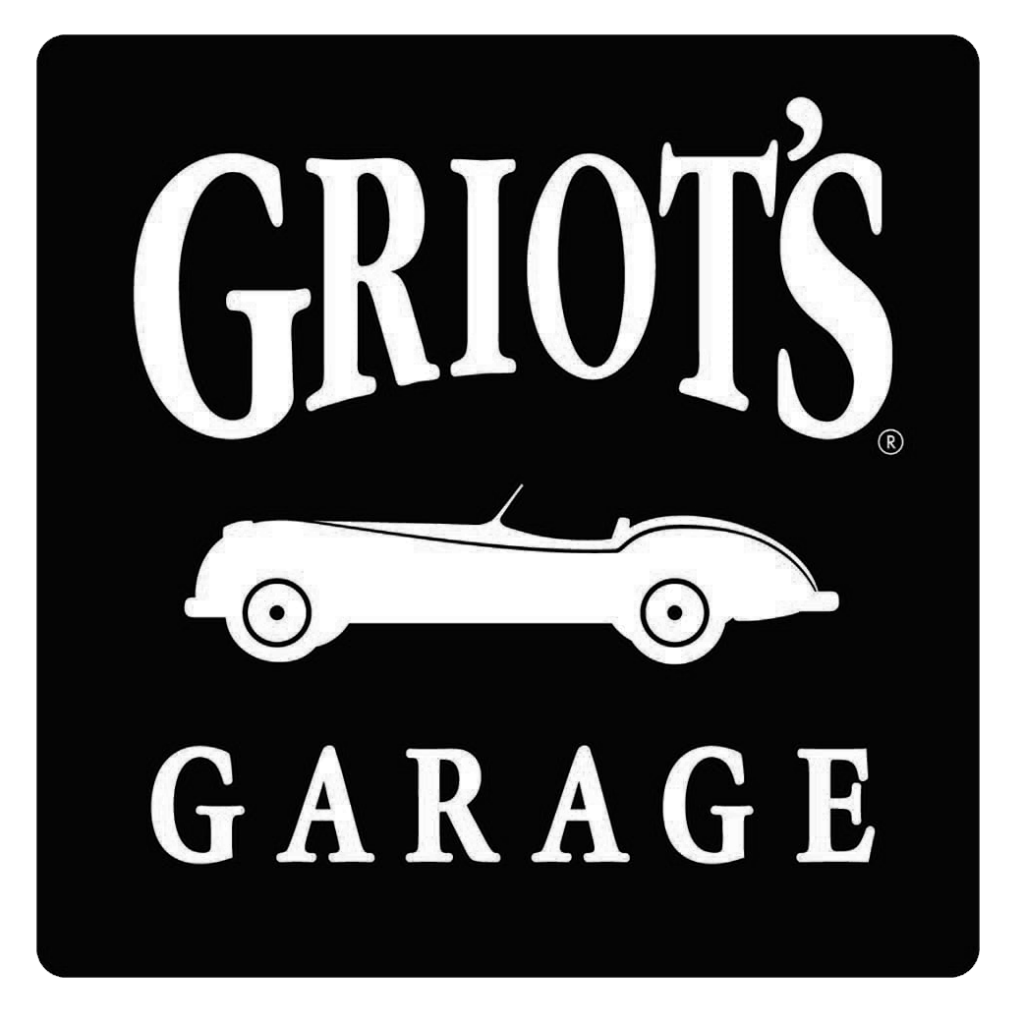
Grit’s Garage is a US brand that offers you a wide range of car care tools and products, including polishers. They provide reliable tools for reasonable prices with a focus on ergonomics.
Conclusion
Polishing a car is the most noticeable and essential step in maintaining the appearance and condition of your vehicle. Preparing your car properly, choosing the right tools and products, and following the correct polishing process are crucial for achieving desired results. Whether you prefer hand polishing or using a DA polisher, there are various things and techniques to consider.
If you want to achieve better results and remove deeper scratches and swirl marks without spending much time, you should use machine polishing. Hand polishing can bring you noticeable results and enhance gloss. On the other hand, to achieve the same results as with DA polisher, you will have to spend weeks hand-polishing your car. Additionally, investing in high-quality polishing products like compounds and polishes can greatly impact the results of your polishing job.
Remember, proper car polishing requires attention to detail, patience, and accuracy. By following the tips and techniques in this post, you can achieve a glossy and swirl-free finish to your car’s paint. What are you waiting for? Go and grab your first polishing kit so that next weekend you will change your vehicle’s appearance to perfection!

